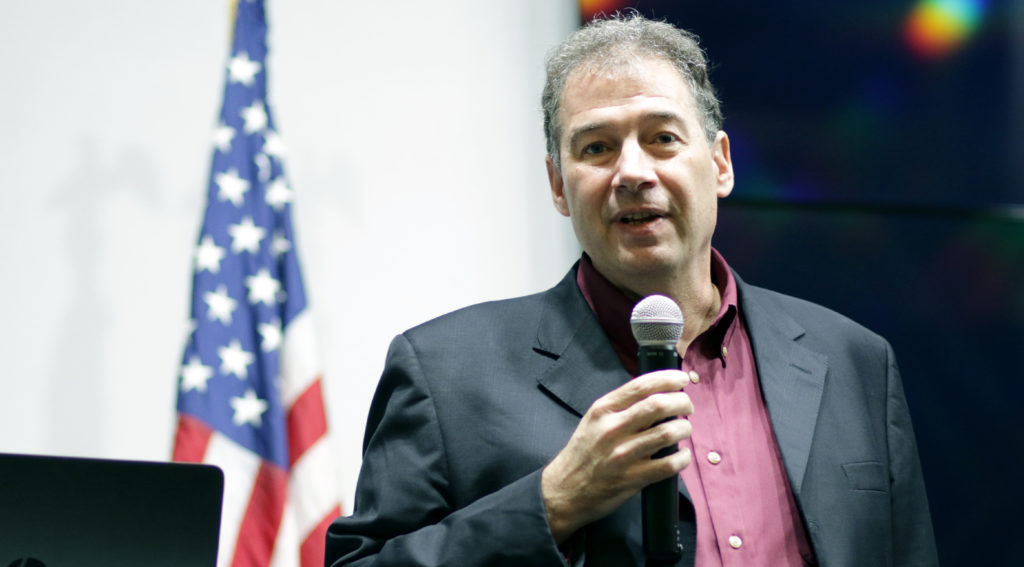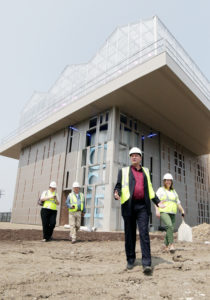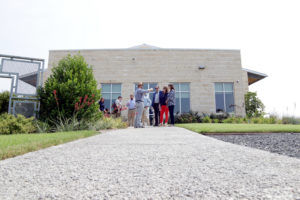Texas A&M vice chancellor: Agriculture must battle chronic disease

Urban buy-in critical for success
Writer:Gabe Saldana, 956-408-5040, [email protected]
DALLAS — Urban residents making up some 80 percent of the U.S. population remain disconnected from agricultural food sources and are increasingly afflicted by nutrition- and diet-related chronic disease, said Dr. Patrick Stover, Texas A&M University System vice chancellor and dean for agriculture and life sciences.
“About half of U.S. adults are acquiring some type of medical condition related to the food they eat, costing the country about $1 trillion each year,” he said.
Stover — also sole finalist to become director of Texas A&M AgriLife Research — said agricultural science must shift its focus beyond generating food to generating a “food environment that promotes healthy people.”
“We must enhance health-promoting qualities in agricultural commodities and connect growing urban populations to the rural agricultural activity improving their health and quality of life,” he said.

The vice chancellor, who joined Texas A&M in March, made the remarks during a two-day tour of initiatives at the Texas A&M AgriLife Research and Extension Center in Dallas. The center’s new headquarters is slated to open late this year.
“Agriculture must become integral to urban culture,” Stover said. “People today, as we become more urbanized, don’t know where our food comes from or its role in our health. That has to change.”
Meanwhile, he said, agricultural science must grow its capacity for harnessing “big data” to improve food quantity, quality and economic value based on the varying nutritional needs of individual persons.
“Robust data does not exist yet for us to affect this,” Stover said. “But these resources will enable us to begin setting recommendations for food production and legislation based on reducing chronic disease.”
During his visit, the vice chancellor met with regional leaders of the Texas A&M AgriLife Extension Service. They discussed efforts of the agency’s Healthy Texas initiative on preventive health, which includes a range of food and nutrition programming. He also met with AgriLife Extension’s regional 4-H officials to discuss ongoing learning initiatives at local schools.

Stover spent a day touring the field research plots and laboratories of the Dallas center’s turfgrass breeding, plant disease immunity and genome research teams. He and center personnel discussed emerging technologies in fundamental plant sciences and their applications in better agricultural systems. He also met with turfgrass program stakeholders including the Turfgrass Producers of Texas trade association, the U.S. Golf Association and Tanglewood Golf Resort of Pottsboro.
Stover toured water- and resource-efficient landscape installations as well as the IPM Experience House — a pest-control-industry teaching facility focused on integrated pest management and run by AgriLife Extension entomologists at the Dallas center.

He traveled with the center’s Water University program to Tarrant Regional Water District Headquarters in Fort Worth. There, the group explored a demonstration landscape by Water University and the regional water provider. The installation teaches visitors to use native and adapted plant life for water conservation and quality protection. The groups also reviewed historical collaborations in ecological engineering and watershed planning.
“All of these programs represent a multi-discipline approach that brings to bear the full agricultural expertise of the Texas A&M University System to boost our economy, protect our resources and promote a high quality of life for Texans,” Stover said. “We believe our efforts over the next five years will place us in the midst of an agricultural revolution.”
A photo gallery of the vice chancellor’s Dallas visit is available at https://www.flickr.com/photos/agrilifetoday/albums/72157700577016825


